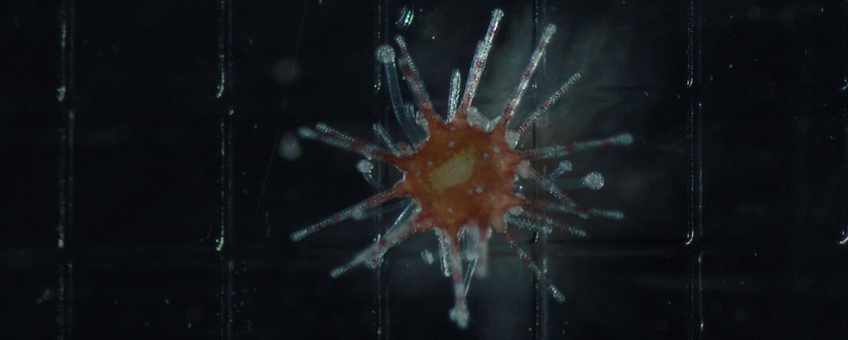
Assisted natural recovery of sea urchin populations around Saba and Sint Eustatius
Caribbean Netherlands Science Institute, Dutch Caribbean Nature Alliance (DCNA), Golden Rock Dive Center, HZ University of Applied Sciences, ISER Caribe, Saba Conservation Foundation (SCF), STENAPA, Van Hall Larenstein, Wageningen Marine Research, Wageningen University & Research, Wortel Product DesignResearchers are investigating the larval and settlement stage of Diadema populations around the islands of Saba and Sint Eustatius. The first results show that some locations have a high suitability for “assisted natural recovery”.
In 1983, unbeknownst to everyone, the Caribbean seascape was about to drastically change. Starting off the coast of Panama, a new disease began to spread, following water currents and eventually decimating Caribbean sea urchin populations. Within a few years, 98 percent of the long spined sea urchin (Diadema antillarum) populations had been completely wiped out. Now, 37 years later, these populations have only recovered at an average of 12 percent Caribbean wide. Why have these populations been so slow to recover? Is there anything scientists can do to help this recovery along?

RAAK PRO Diadema Project
The RAAK PRO Diadema project aims to answer these questions and to provide innovative solutions to give the urchin populations around Saba and Sint Eustatius a boost. The project is a collaborative effort between University of Applied Sciences Van Hall Larenstein, STENAPA, Saba Conservation Foundation, Wageningen Marine Research, Wageningen University, Caribbean Netherlands Science Institute, University of Applied Sciences HZ, ISER Caribe, Wortel Product Design and Golden Rock Dive Center. The project is partially funded by the Dutch Organization for Scientific Research (NWO) and will run until the end of 2023.
Importance of Diadema sea urchins
Diadema are important herbivores on Caribbean coral reefs. Without them, macro algae can quickly flourish, smothering corals and preventing future coral recruitment. Globally, corals are already under immense pressure due to changing water conditions, so anything that can be done to improve their overall health is bound to make a significant difference.
It is still unclear why Diadema populations have struggled to recover, although evidence suggests that it is likely due to a combination of low settlement and high predation rates of juveniles. Diadema go through a larval phase, where they freely float in the water for around thirty days. As tiny larvae, they float along the ocean currents before they eventually settle on the reef where they will go through metamorphosis, becoming the sea urchins we recognize. The RAAK PRO Diadema project aims to develop interventions with the purpose to maximizing settlement of larvae and survival of juveniles.
Lab and field approach
In the VHL marine lab in Leeuwarden, adult Diadema are induced to spawn and fertilized eggs are collected by the researchers. During the first two rounds of egg collection (on May 6th and May 27th), researchers were able to collect 10,000 and 40,000 eggs respectively. Researchers continue to improve collection methods and an impressive six million eggs were collected on June 16th. Excitingly, the eggs from the first two rounds have already begun to settle and go through metamorphosis, growing to very tiny sea urchins, about one millimeter in size. Diadema are known for being difficult to culture, so this is the first big accomplishment of the project. Because adult Diadema can spawn every two weeks, the larvae will now be used to identify the biochemical cues responsible for settlement and metamorphosis.

The Caribbean part of this project also includes measuring and collecting settlers with the use of "settlement collectors". These are small 10 x 10 centimeter plates suspended in the water column around both islands. These collectors have already demonstrated a significant difference in recruit density between locations, with recruitment ranging from very high to almost nothing. Additionally, researchers found that the highest settlement rates were between the months of May and September. Both these facts will help researchers decide when and where to deploy “assisted natural recovery” efforts to help boost the settlement and survival rates for Diadema larvae and juveniles.
In addition, field surveys are being conducted to identify the most significant predators. This will aid in the design of shelters which will be built and deployed to protect the juveniles on the reef. A combined settlement collector and juvenile shelter will result in the “Diadema Booster”, that will hopefully encourage a more successful recovery of these urchins around Saba and Sint Eustatius. If successful, this project will facilitate an increase in adult sea urchin populations, along with an overall decrease in macro-algae, leading to improved coral cover and healthier reefs.
After year one of the project, researchers concluded that some reefs have very high natural settlement rates and therefore have a high potential for assisted natural recovery with help of the Diadema Booster. However, on some reefs natural settlement is low or absent. To restore Diadema populations on these reefs, the project partners intend to start a new project with the focus on other methods to restore Diadema populations, for example the large scale production and planting of juveniles. Interested organizations are encouraged to get in touch with the researchers!
International collaboration
In July, researchers Alwin Hylkema and Tom Wijers from Van Hall Larenstein shared their findings in an international Diadema restoration seminar hosted by Healthyreefs to encourage knowledge sharing within the region. During the seminar, experts from around the Caribbean were able to showcase their research, highlighting efforts that they have found to be successful. The key to healthy reefs is maintaining a balance between all of its inhabitants. Therefore, the recovery of key species, such as the Diadema, is critical for reestablishing this balance. It will be exciting to see what projects such as these will discover next.
For more information on the RAAK PRO Diadema project you can follow along the website or on Facebook, or get in touch with project leader Alwin Hylkema.
Text: Alwin Hylkema, University of Applied Sciences Van Hall Larenstein & Dutch Caribbean Nature Alliance (DCNA)
Photos: Tom Wijers
